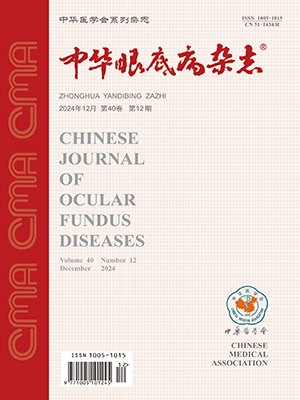| 1. |
Vessey KA, Waugh M, Jobling AI,et al.Assessment of retinal function and morphology in aging CCL2 knockout mice[J]. Invest Ophthalmol Vis Sci, 2015, 56(2):1238-1252.DOI:10.1167/iovs.14-15334.
|
| 2. |
Klueh U,Czajkowski C,Ludzinska I,et al.Impact of CCL2 and CCR2 chemokine/receptor deficiencies on macrophage recruitment and continuous glucose monitoring in vivo[J].Biosens Bioelectron,2016,86:262-269. DOI:10.1016/j.bios.2016.06.026.
|
| 3. |
罗宇家, 李如波,马诗雨,等.CCR2和CCL2与缺氧缺血性脑损伤的相关性研究进展[J].法医学杂志,2016,32(1):54-57.DOI:10.3969/j.issn.1004-5619.2016.01.012.
Luo YJ, Li RB, Ma SY, et al.Progress on hypoxic-ischemic brain damage associated with CCR2 and CCL2[J].Journal of Forensic Medicine,2016,32(1):54-57.DOI:10.3969/j.issn.1004-5619.2016.01.012.
|
| 4. |
Lin J, Kakkar V, Lu X. Impact of MCP-1 in atherosclerosis[J]. Curr Pharm Des,2014,20(28):4580-4588.DOI:10.2174/13816128206614522115801.
|
| 5. |
Qidwai T, Khan MY. Impact of genetic variations in C-C chemokine receptors and ligands on infectious diseases. Hum Immunol,2016,8859(16):30128. http://www.sciencedirect.com/science/article/pii/S0198885916301288.DOI:10.1016/j.humimm.2016.06.010.
|
| 6. |
Bozzi Y, Caleo M. Epilepsy, seizures, and inflammation:role of the C-C motif ligand 2 chemokine[J].DNA Cell Biol,2016,35(6):257-260.DOI:10.1089/dna.2016.3345.
|
| 7. |
Lim SY, Yuzhalin AE, Gordon-Weeks AN, et al. Targeting the CCL2-CCR2 signaling axis in cancer metastasis.Oncotarget,2016,2016:E1. http://www.impactjournals.com/oncotarget/..DOI:10.18632/oncotarget.7376.
|
| 8. |
Skwor TA, Atik B, Kandel RP,et al.Role of secreted conjunctival mucosal cytokine and chemokine proteins in different stages of trachomatous disease.PLoS Negl Trop Dis,2008,2(7):264.http://www.ncbi.nlm.nih.gov/pmc/articles/PMC2442224/.DOI:10.1371/journal.pntd.0000264.
|
| 9. |
Rajajendram R, Tham CL, Akhtar MN,et al.Inhibition of epithelial CC-family chemokine synthesis by the synthetic chalcone DMPF-1 via disruption of NF-κB nuclear translocation and suppression of experimental asthma in mice. Mediators Inflamm,2015,2015:176926.http://www.ncbi.nlm.nih.gov/pmc/articles/PMC4537758/.DOI:10.1155/2015/176926.
|
| 10. |
Mohamed YH, Ono K, Kinoshita H, et al. Success rates of vitrectomy in treatment of rhegmatogenous retinal detachment. J Ophthalmol,2016,2016:2193518.http://www.ncbi.nlm.nih.gov/entrez/query.fcgi?cmd=Retrieve&db=pubmed&dopt=Abstract&list_uids=27478632&query_hl=1.DOI:10.1155/2016/2193518.
|
| 11. |
Kunikata H, Yasuda M, Aizawa N, et al. Intraocular concentrations of cytokines and chemokines in rhegmatogenous retinal detachment and the effect of intravitreal triamcinolone acetonide[J]. Am J Ophthalmol,2013,155(6):1028-1037.DOI:10.1016/j.ajo.2013.01.013.
|
| 12. |
Yoshida S, Yoshida A, Ishibashi T,et al.Role of MCP-1 and MIP-1alpha in retinal neovascularization during postischemic inflammation in a mouse model of retinal neovascularization[J].J Leukoc Biol,2003,73(1):137-144.
|
| 13. |
Pollreisz A, Sacu S, Eibenberger K,et al.Extent of detached retina and lens status influence intravitreal protein expression in rhegmatogenous retinal detachment[J].Invest Ophthalmol Vis Sci, 2015,56(9):5493-5502. DOI:10.1167/iovs.15-17068.
|
| 14. |
Ricker LJ, Kijlstra A, de Jager W,et al.Chemokine levels in subretinal fluid obtained during scleral buckling surgery after rhegmatogenous retinal detachment[J].Invest Ophthalmol Vis Sci, 2010,51(8):4143-4150. DOI:10.1167/iovs.09-5057.
|
| 15. |
Nakazawa T, Hisatomi T, Nakazawa C,et al.Monocyte chemoattractant protein 1 mediates retinal detachment-induced photoreceptor apoptosis[J]. Proc Natl Acad Sci USA,2007,104(7):2425-2430.
|
| 16. |
Arroba AI, Alcalde-Estevez E, Garcia-Ramirez M, et al. Modulation of microglia polarization dynamics during diabetic retinopathy in db/db mice[J]. Biochim Biophys Acta,2016,1862(9):1663-1674.DOI:10.1016/j.bbadis.2016.05.024.
|
| 17. |
Huang H, Jing G, Wang JJ, et al. ATF4 is a novel regulator of MCP-1 in microvascular endothelial cells[J].J Inflamm (Lond),2015,12:31. DOI:10.1186/s12950-015-0076-1.
|
| 18. |
Nawaz MI, Van Raemdonck K, Mohammad G, et al. Autocrine CCL2, CXCL4, CXCL9 and CXCL10 signal in retinal endothelial cells and are enhanced in diabetic retinopathy[J]. Exp Eye Res,2013,109:67-76.DOI:10.1016/j.exer.2013.01.008.
|
| 19. |
Chernykh VV, Varvarinsky EV, Smirnov EV, et al. Proliferative and inflammatory factors in the vitreous of patients with proliferative diabetic retinopathy[J]. Indian J Ophthalmol,2015,63(1):33-36. DOI:10.4103/0301-4738.151464.
|
| 20. |
Jiang Z, Hennein L, Xu Y, et al. Elevated serum monocyte chemoattractant protein-1 levels and its genetic polymorphism is associated with diabetic retinopathy in Chinese patients with type 2 diabetes[J].Diabet Med,2016, 33(1):84-90. DOI:10.1111/dme.12804.
|
| 21. |
Rangasamy S,McGuire PG,Franco Nitta C,et al.Chemokine mediated monocyte trafficking into the retina:role of inflammation in alteration of the blood-retinal barrier in diabetic retinopathy.PLoS One,2014,9(10):108508. http://www.ncbi.nlm.nih.gov/pmc/articles/PMC4203688/.DOI:10.1371/journal.pone.0108508.
|
| 22. |
El-Asrar AM, Al-Obeidan SS, Kangave D, et al. CXC chemokine expression profiles in aqueous humor of patients with different clinical entities of endogenous uveitis[J].Immunobiology,2011,216(9):1004-1009.DOI:10.1016/j.imbio.2011.03.007.
|
| 23. |
Curnow SJ, Falciani F, Durrani OM, et al. Multiplex bead immunoassay analysis of aqueous humor reveals distinct cytokine profiles in uveitis[J]. Invest Ophthalmol Vis Sci,2005,46(11):4251-4259.
|
| 24. |
Hu DN, Bi M, Zhang DY, et al. Constitutive and LPS-induced expression of MCP-1 and IL-8 by human uveal melanocytes in vitro and relevant signal pathways[J]. Invest Ophthalmol Vis Sci,2014,55(9):5760-5769.DOI:10.1167/iovs.14-14685.
|
| 25. |
Zhao J,Chen M,Xu H.Experimental autoimmune uveoretinitis (EAU)-related tissue damage and angiogenesis is reduced in CCL2-/-CX3 CR1gfp/gfp mice[J].Invest Ophthalmol Vis Sci,2014,55(11):7572-7582. DOI:10.1167/iovs.14-15495.
|
| 26. |
Falk MK, Singh A, Faber C, et al. CX3CL1/CX3CR1 and CCL2/CCR2 chemokine/chemokine receptor complex in patients with AMD. PLoS One, 2014, 9(12):112473.http://www.ncbi.nlm.nih.gov/pmc/articles/PMC4266494/.DOI:10.1371/journal.pone.0112473.
|
| 27. |
Levy O, Lavalette S, Hu SJ, et al. APOE isoforms control pathogenic subretinal inflammation in age-related macular degeneration[J].J Neurosci,2015, 35(40):13568-13576.DOI:10.1523/JNEUROSCI.2468-15.2015.
|
| 28. |
Combadiere C, Feumi C, Raoul W, et al. CX3CR1-dependent subretinal microglia cell accumulation is associated with cardinal features of age-related macular degeneration[J]. J Clin Invest,2007,117(10):2920-2928.
|
| 29. |
Chen H, Liu B, Lukas TJ, et al. The aged retinal pigment epithelium/choroid:a potential substratum for the pathogenesis of age-related macular degeneration. PLoS One,2008,3(6):2339.http://www.ncbi.nlm.nih.gov/pmc/articles/PMC2394659/.DOI:10.1371/journal.pone.0002339.
|
| 30. |
Higgins GT, Wang JH, Dockery P, et al. Induction of angiogenic cytokine expression in cultured RPE by ingestion of oxidized photoreceptor outer segments[J]. Invest Ophthalmol Vis Sci,2003,44(4):1775-1782.
|
| 31. |
Dong N, Xu B, Shi H, et al. Baicalein inhibits amadori-glycated albumin-induced MCP-1 expression in retinal ganglion cells via a microRNA-124-dependent mechanism[J].Invest Ophthalmol Vis Sci,2015,56(10):5844-5853.DOI:10.1167/iovs.15-17444.
|




